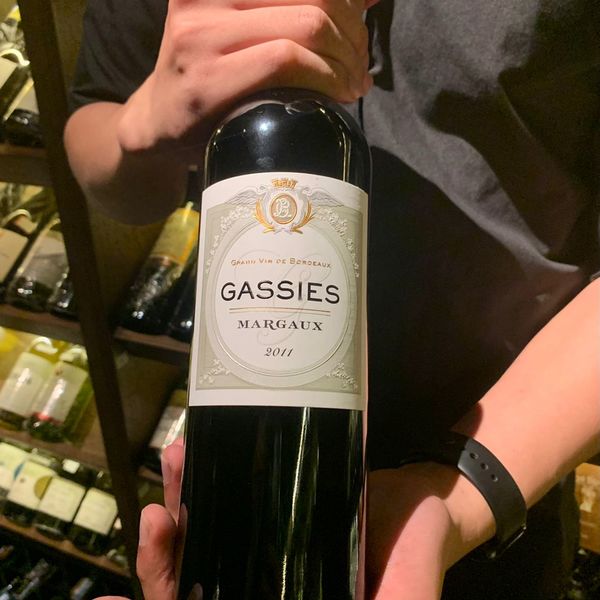December 1st, 2021
Lets visit Bordeaux 🍷
Château Rauzan Gassies, Margaux 2nd Grand Cru Classé, 2011
VND 3,350,000
The wines of Rauzan-Gassies are aged for 12 months in oak barrels (50% renewed each year). This is a classical Margaux. The nose develops aromas of violet, blackberry and blackcurrant. On the palette it is full and rich but also has very fine tannins following the style of Margaux wines.
* Country/Region: Bordeaux
* Appellation: Margaux
* Domain: Château Rauzan Gassies
* Ranking: 2ème Grand Cru Classé
* Colour: Red
* Owner: SCI du Château Rauzan-Gassies
* Surface Area: 30 ha
* Production: 120000 bottles
* Grape variety: 65% Cabernet Sauvignon, 25% Merlot, 10% Cabernet franc
The property's history goes back to 1661, when Pierre de Rauzan, a merchant in the Place de Bordeaux and steward at Château Margaux, acquired the seigniory of Gassies and its vineyard. His descendants continued his work until the Revolution, when the property was split into Rauzan-Ségla and Rauzan-Gassies. In 1855 the two Rauzan were classed as a second grand cru. Today the property belongs to the descendants of Paul Quié, a wine broker who bought it in 1946. The family also owns Château Bel Orme Tronquoy de Lalande and Croizet-Bages. Château Rauzan-Gassies' vineyard consists of numerous small plots spread over one of the Garonne's fossil beds, thereby offering a comprehensive range of soils that provide a good illustration of the terroir's characteristics. A new vat room with stainless steel vats with a capacity of 4,000 hectolitres was built in 1992.
Margaux is an important appellation in the Haut-Médoc district of Bordeaux, southwestern France. Located 25 kilometers (15 miles) north of the city of Bordeaux, the appellation is famous for producing supple, perfumed wines, predominantly from Cabernet Sauvignon.
The Margaux appellation contains 21 cru classé properties from the 1855 Bordeaux Classification (20 of which still exist), more than any other Left Bank appellation. It is also, geographically speaking, the largest in the Médoc, and is divided into five communes or parishes.
In the north, Soussans borders Pauillac. It boasts no cru classé wines, unlike the commune of Margaux to its south. The latter includes ten cru classé chateaux including first growth Château Margaux, and Château Palmer which is "only" a third growth but regarded as one of the great Bordeaux estates. South of Margaux commune Cantenac is home to seven cru classé properties. Giscours and Dauzac are the crus classés based in Labarde, while southernmost Arsac is further inland and the location of fifth growth Château du Tertre.
In Saint-Julien, Saint-Estèphe and Pauillac, the vineyards belonging to each château are often clearly divided and consolidated in a single plot, but in Margaux, this is not the case. Here, even vineyards belonging to the wealthier châteaux are dispersed and mixed in with those of their rivals. The result is that the idea of unique terroirs is diluted, and so winemaking practices and choice of grape varieties play more important roles in the character of wines.
The distinctive flavors and textures of Margaux wines are often attributed to the local soils. In Margaux, the soils have a high gravel content (Pauillac and Saint-Estèphe have slightly more clay), which leads to excellent drainage and a low level of nutrients. Vines grow well in poor, loose, free-draining soil; the poorer the soil, the deeper the vines must go to find water and nourishment. This makes them physically stronger and also allows them to reflect the specific characteristics of the deeper soils. The downside is that Margaux's wines can seem almost too light and delicate in cool vintages.
The grapes permitted for use here are Cabernet Sauvignon, Cabernet Franc, Merlot, Carmenère, Petit Verdot and Malbec. They must come from vineyards planted to densities of 6500 to 10,000 plants per hectare (2631 and 4048 per acre). The total vineyard area of the appellation covers approximately 1530 hectares (3780 acres).
